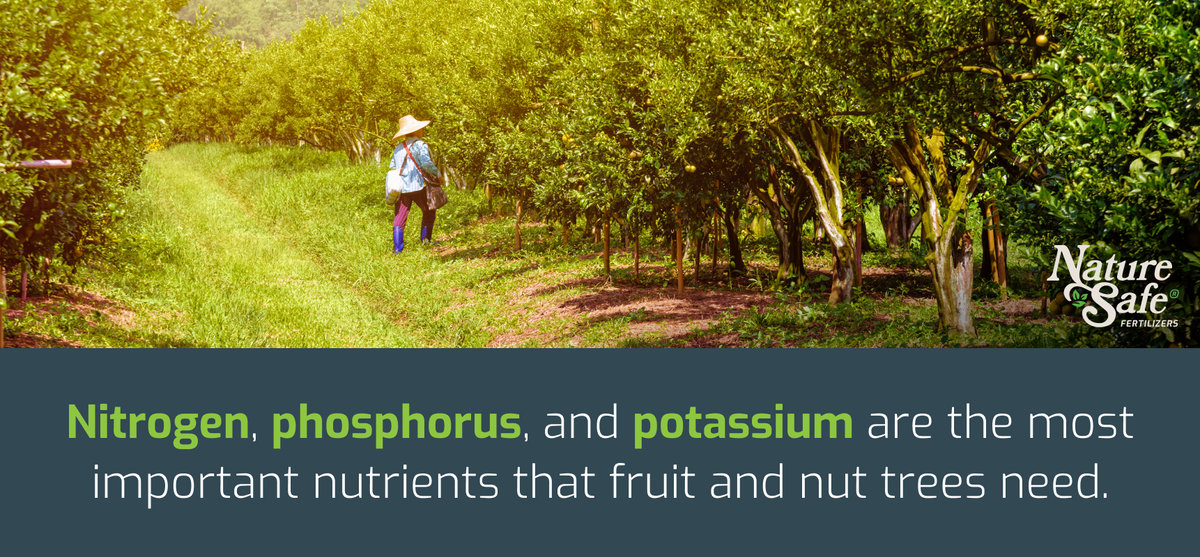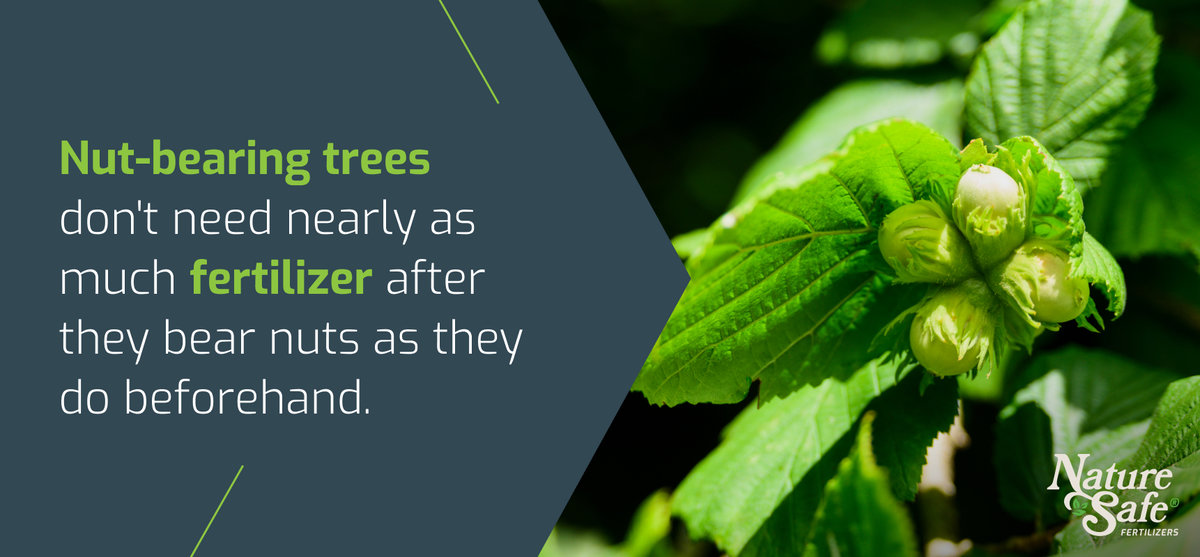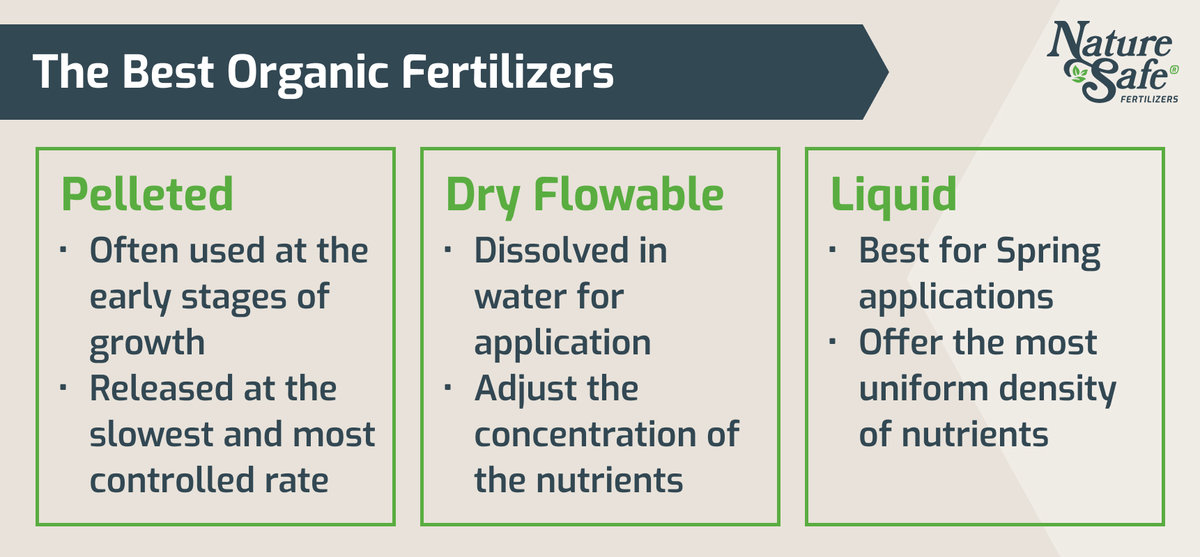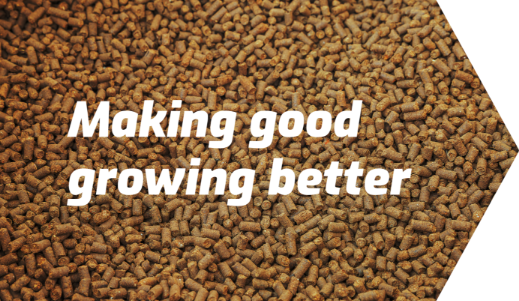
Fruit and nut trees require the same nutrients as other crops. Nitrogen, phosphorus, and potassium are the most important, but they also need calcium, magnesium, sulfur, plus a few more. What differentiates all types of crops is how much of each nutrient they need and when they need it.
Nutrient Basics for Tree Fruits and Nuts
Nitrogen
Most fruit and nut trees are fairly similar in that nitrogen is the most important ingredient they need. Nitrogen is what creates the lush foliage and strong branches that lead to better fruits.
Too much of a good thing isn’t good for anyone, though. A tree that is exposed to too much nitrogen will yield less fruit. According to Oregon State University, too much nitrogen can also ruin the fruits. Apple trees can get the disorder bitter pit if too much nitrogen is applied too late.
Phosphorus and Potassium
These two may not get the pomp and circumstance that nitrogen does, but it doesn’t mean they don’t have a role to play. Nitrogen is important to grow the foliage, fruits and nuts, but phosphorus and potassium keep the tree alive and healthy. They both play a large role in photosynthesis, the tree’s ability to uptake water, and potassium in particular plays a major part in the proteins and structure of the plants.

Timing Matters
Each crop has unique nutritional needs at different stages of life. For fruit and nut trees, nitrogen might be the most important macronutrient, but it’ll ‘burn’ the roots of the tree if applied too early in the growing process. The timing of applying organic fertilizer matters a lot.
Planting and First Year
Phosphorus and potassium can be applied early on, even while planting. The tree roots uptake these quite slowly, so early application is encouraged. The planting and early growth stage is still too early for nitrogen. The delicate roots get overwhelmed and burned by the nitrogen and the salts that it is often carried in. Nature Safe Fertilizer products are all low salt to keep this from happening.
Young Trees
Once the trees develop leaves, it’s safe to apply nitrogen-rich fertilizers. Because the foliage is starting to develop, the green-boosting nitrogen is much needed. It’s also important to apply in the spring, as it's right before the primary growing season.
Mature and Fruiting
Mature fruit and nut trees also have unique needs. Some varieties only need fertilizing right before summer or major growing season. Some fruit trees, like many citrus trees, need fertilizing every few months throughout the year.
Nut-bearing trees don't need nearly as much fertilizer after they bear nuts as they do beforehand. They are fairly self-sustaining once their root systems fully develop. The key at this point is to ensure the soil remains healthy enough for the trees to continue to thrive.

The Best Organic Fertilizers
Organic fertilizers come in several different forms, and each has its own benefits for fruit and nut trees. Because the timing of the nourishment matters so much, a different type of fertilizer might work better at different stages of growth.
Pelleted
Pelleted, or granular fertilizers, are released at the slowest and most controlled rate. Some fruit and nut tree farmers might use this form of organic fertilizer at the early stages of growth so that the young trees get the nourishment they need throughout this vital period.
Nature Safe Fertilizer’s 8-5-5 formula is ideal for early application. While still high in nitrogen, the saplings also get a fair amount of phosphorus and potassium to get them through to maturity. The controlled release formula ensures that the roots won’t get burned by the nitrogen.
Dry Flowable
Dry flowable fertilizers (also called water-soluble fertilizers) come in a powder form and are dissolved in water for application. The advantage here is that you can adjust the concentration of the nutrients based on how much water you mix in. The more water you mix in, the deeper the fertilizer can penetrate into the soil—meaning that the roots can uptake those nutrients a lot quicker.
Because more phosphorus and potassium are recommended for the first few seasons of the tree’s life, Nature Safe’s 7-7-7 formula is perfect for those early applications.
Nature Safe also makes a dry flowable with a 15-0-1 NPK ratio that is more beneficial for the nitrogen boosts in the spring.

California Fruit and Nut Crops
California is the number one producer of fruits and nuts in the United States. Farmers in the golden state know that correct application of organic fertilizers gives consumers the best produce possible. So what are the tricks of the trade for the top crops?
Almonds
Almonds are the second most valuable agricultural product in California and the top-selling tree crop. Almond trees follow the trend of most nut and fruit trees in terms of the nourishment required during growth.
Too much nitrogen early on in life could kill the tree roots, but once they develop leaves, they need Nitrogen.
Pistachios
California is the number one producer in the world for almonds and pistachios. As of 2012, the state produced 40% of the world’s pistachios.
This particular nut tree, though it seems to be happy in California, is a little needier than some others. UC Davis recommends all of the Big Three: nitrogen, phosphorus, and high doses of potassium before the primary growing season to increase nut quality.
Walnuts
Walnuts are a bit backwards compared to other nut trees. They do like a small amount of nitrogen during the early growing stages. Phosphorus and potassium should be applied sparingly or when soil tests show that more is needed.
Nitrogen uptake is usually pretty low in the winter, whereas phosphorus and potassium are consumed mostly in the winter.
Citrus
Orange production in California is worth $1.9 billion as of 2017. Like all citrus fruits, orange tree roots are delicate, and don’t need as much nitrogen as young trees. They require other nutrients before they mature.
Making Good Growing Better
There are guidelines to follow, but knowing your crop inside and out will always yield the best results.
Regardless of which region you farm in, using Nature Safe Fertilizer’s organic tree fruit and nut formulas will help you reach your agronomic goals. We will help you find the best fertilizer to grow the juiciest fruits or the tastiest nuts possible. Call us at 800-743-7413.
